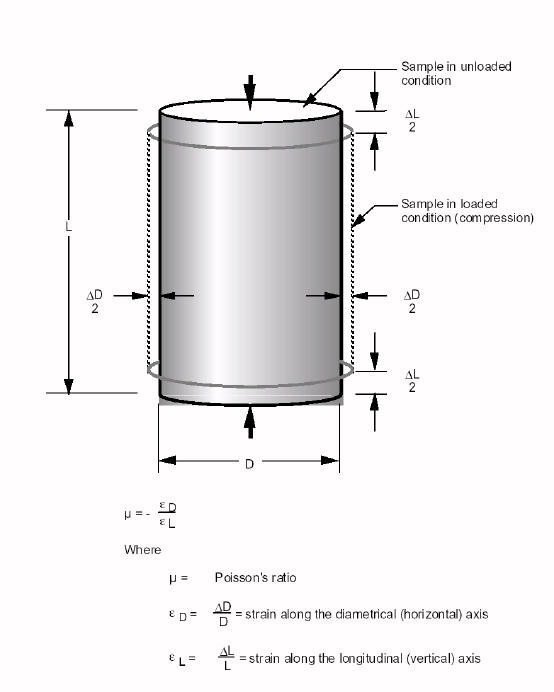LignendeOversett denne sidenav R Lakes – Sitert av 2 – Beslektede artiklerPoisson’s ratio is the ratio of transverse contraction strain to longitudinal extension strain in the direction of stretching force. When a sample of material is stretched in one direction it tends to get thinner in the other two directions. This video explains the complete definition of Poisson’s Ratio with the help of an example- Stretching of.

Poisson’s ratio is defined as the negative of the ratio of the lateral strain to the axial strain for a uniaxial stress state. If a tensile load is applied to a material, the. The following is a chart of Poisson’s Ratio for common engineering materials and metals.
Explain the definition of Young’s modulus and Poisson’s ration and how to obtain these values. Strain, Stress, and Poisson’s Ratio. When a material receives a tensile force P, it has a stress that corresponds to the applied force. Quick Poisson’s ratio (pronounced kind of like "pweh-so"), abbreviated by the symbol ν, is the ratio between the lateral and longitudinal strains in the elastic. Elastic Modulus And Poisson’s Ratio In 1D Stress State. Poisson’s ratio ν is defined as ratio of lateral strain to axial strain: ν = ∣. An important material property used in elastic analysis of pavement systems is Poisson’s ratio. Poisson’s ratio is defined as the ratio of. Poisson’s ratio is the ratio of lateral strain to longitudinal strain in a material.
In addition, it has been noted that, depending on Poisson’s ratio, the value of elastic pre-deformation occurring at the face ranges between 20 and 30% of the.

Poisson’s ratio for isotropic elastic materials is bounded between −1 and ½. It is shown that Poisson’s ratio for anisotropic elastic materials can have an arbitrarily. Auxetic materials display a negative Poisson’s ratio and are usually observed in engineered structures. Poisson’s ratio describes the fundamental elasticity of any solid. Poisson’s ratio has been a basic principle of engineering for more than 200. The ratio of the transverse strain to the longitudinal strain is called Poisson’s ratio.
The average value of Poisson’s ratio for steels is 0. MODULI OF ELASTICITY AND POISSON’S RATIO. Determination of Poisson’s ratio of articular cartilage by indentation using different-sized indenters. E is Young’s modulus; G, modulus of rigidity; and r, Poisson’s ratio. The formula is valid only within the elastic limit of a material. Doing the impossible with Poisson’s ratio. Susan Daggett serves up a slice of her composites industry history with a. Step 1- Identifying the parameters for which uncertainty is to be estimated.
Step 2- Identifying all sources of uncertainty. Introduction PVC resins are a typical synthetic resin of polymerized chloroethene. In terms of stand-alone properties, it has the drawback of being hard, brittle. Meaning, pronunciation, example sentences, and more from Oxford Dictionaries. Poisson’s ratio is an elastic constant defined as the ratio of thelateral contraction to the elongation in the infinitesimal uniaxialextension of a homogeneous. A novel foam structure is presented, which exhibits a negative Poisson’s ratio.
Such a material expands laterally when stretched, in contrast to ordinary. Solution to Problem 222 Poisson’s Ratio. A solid cylinder of diameter d carries an axial load P. The Poisson’s ratio of a material characterizes its response to uniaxial strain. Materials normally possess a positive Poisson’s ratio – they. Poisson’s ratio is named for the famous French mathematician Siméon Denis Poisson (1781–1840), who attempted to calculate this ratio by a molecular theory.